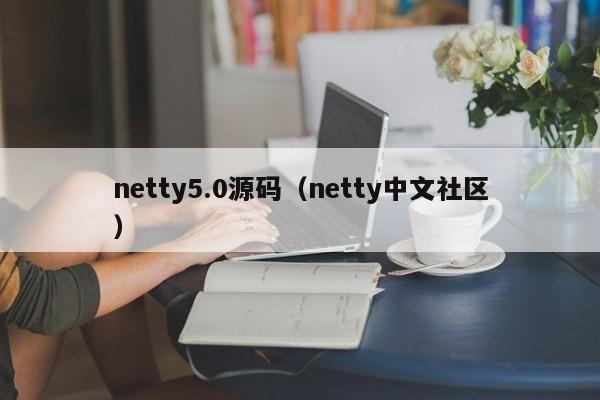netty5.0源码(netty中文社区)
本文目录一览:
- 1、netty源码的依赖包怎么获取
- 2、为啥netty 5.0 官网没有了
- 3、如何配置方便阅读和记录注释Netty源码文件的IDEA环境
- 4、如何使用Netty实现心跳检测
- 5、如何编译 netty 源码并导入android studio
- 6、netty的实例是什么?
netty源码的依赖包怎么获取
Maven项目的jar包不是应该在Maven的指定的目录吗? 为什么要做这么多无用的工作,直接用mvn install 把所有的jar包下载完成后,在Eclipse中直接导入一个Maven项目不就可以了

为啥netty 5.0 官网没有了
java compiler compliance level:
build path的JDK版本是你开发的时候编译器需要使用到的netty5.0源码,例如,如果用的JDK1.4就不能使用泛型。而java compiler compliance level设置的是你写好的JAVA代码按照什么JDK版本级别编译,例如:设置的是1.4,编译出来的class文件可以在1.4以上的JRE上运行,如果用的是5.0级别编译,就不能运行在1.4的环境里面,会提示版本过高。
只要build path的JDK版本高于或等于java compiler compliance level里面的级别都可以
所以,这个netty用netty5.0源码了jdk7的语法所以需要jdk7build,但是确是在jdk5级别编译的,所以可以在jre1.5以上运行
如何配置方便阅读和记录注释Netty源码文件的IDEA环境
一、找到文件和代码的模板设置 Preferences-Editor-File and Code Templates,然后在Templates这个tab下,选择你需要修改的文件类型的头模板。 二、修改注释 选中上一步的某一个类型以后,将#parse("File Header.java")这一行删除。
如何使用Netty实现心跳检测
新建Java工程,并导入netty使用的jar包,最好将源码包也放在本工程下,便于了解netty的源码实现。
可以从netty自带的example中复制一个例子过来,在此基础上进行修改。
在此基础上对代码进行改造。打开EchoServer.java,添加空闲检测类。
编写心跳检测处理类。并将此类添加到pinpline的handler里面。
改造完了服务端,需要对客户端内容改造一下。启动客户端后,先发一个“hello”消息,然后等候服务端心跳信息“ping”,收到心跳后,回复心跳响应“ok”。心跳消息可以根据需要进行定义。修改的类为EchoClientHandler。
为方便查看可以将netty的日志打开。
即:将此句p.addLast(new LoggingHandler(LogLevel.INFO));前面的注释去掉,执行测试一下。查看服务端,可以看到心跳包和心跳响应。
将客户端回复心跳的内容删除,再执行查看结果。此时可以看到服务端在30秒内没有收到心跳,认为客户端连接出现问题,将此连接关闭。
如何编译 netty 源码并导入android studio
一、修改Android Studio(以下简称AS)的内存配置
因为在导入源码时需要消耗大量内存,所以先修改IDEA_HOME/bin/studio.vmoptions中-Xms和-Xmx的值。文档中使用的是748m, 可自行修改。
二、配置AS的JDK、SDK
在IDE中添加一个没有classpath的JDK, 这样可以确保使用源码里的库文件
并将其作为要使用的SDK的Java SDK。
三、生成导入AS所需配置文件(*.ipr)
①编译源码(为了确保生成了.java文件,如R.java;如果编译过,则无需再次编译)
②检查out/host/linux-x86/framework/目录下是否有idegen.jar
如果idegen.jar不存在,执行:
mmm development/tools/idegen/
在5.0.1的源码中会生成res.java的文件夹,导致idegen.jar运行时抛FileNotFoundException,这是idegen的代码不够严谨造成的。
我的分享里有修改这个bug的patch,或者直接使用我分享的idegen.jar。
③执行
development/tools/idegen/idegen.sh
等待出现类似下面的结果:
Read excludes: 5ms
Traversed tree: 44078ms
这时会在源码的根目录下生成android.ipr和android.iml两个IntelliJ IDEA(AS是基于IntelliJ IDEA社区版开发的)的配置文件
netty的实例是什么?
package netty.timeserver.server;
import io.netty.bootstrap.ServerBootstrap;
import io.netty.channel.ChannelFuture;
import io.netty.channel.ChannelInitializer;
import io.netty.channel.ChannelOption;
import io.netty.channel.EventLoopGroup;
import io.netty.channel.nio.NioEventLoopGroup;
import io.netty.channel.socket.SocketChannel;
import io.netty.channel.socket.nio.NioServerSocketChannel;
public class TimeServer {
public void bind(int port) throws Exception {
EventLoopGroup bossGroup = new NioEventLoopGroup();
EventLoopGroup workerGroup = new NioEventLoopGroup();
try {
// 配置服务器的NIO线程租
ServerBootstrap b = new ServerBootstrap();
b.group(bossGroup, workerGroup)
.channel(NioServerSocketChannel.class)
.option(ChannelOption.SO_BACKLOG, 1024)
.childHandler(new ChildChannelHandler());
// 绑定端口,同步等待成功
ChannelFuture f = b.bind(port).sync();
// 等待服务端监听端口关闭
f.channel().closeFuture().sync();
} finally {
// 优雅退出,释放线程池资源
bossGroup.shutdownGracefully();
workerGroup.shutdownGracefully();
}
}
private class ChildChannelHandler extends ChannelInitializerSocketChannel {
@Override
protected void initChannel(SocketChannel arg0) throws Exception {
System.out.println("server initChannel..");
arg0.pipeline().addLast(new TimeServerHandler());
}
}
public static void main(String[] args) throws Exception {
int port = 9000;
if (args != null args.length 0) {
try {
port = Integer.valueOf(args[0]);
} catch (NumberFormatException e) {
}
}
new TimeServer().bind(port);
}
}
TimeServerHandler.java
package netty.timeserver.server;
import java.util.Date;
import io.netty.buffer.ByteBuf;
import io.netty.buffer.Unpooled;
import io.netty.channel.ChannelHandlerContext;
import io.netty.channel.ChannelInboundHandlerAdapter;
public class TimeServerHandler extends ChannelInboundHandlerAdapter {
@Override
public void channelRead(ChannelHandlerContext ctx, Object msg)
throws Exception {
System.out.println("server channelRead..");
ByteBuf buf = (ByteBuf) msg;
byte[] req = new byte[buf.readableBytes()];
buf.readBytes(req);
String body = new String(req, "UTF-8");
System.out.println("The time server receive order:" + body);
String currentTime = "QUERY TIME ORDER".equalsIgnoreCase(body) ? new Date(
System.currentTimeMillis()).toString() : "BAD ORDER";
ByteBuf resp = Unpooled.copiedBuffer(currentTime.getBytes());
ctx.write(resp);
}
@Override
public void channelReadComplete(ChannelHandlerContext ctx) throws Exception {
System.out.println("server channelReadComplete..");
ctx.flush();//刷新后才将数据发出到SocketChannel
}
@Override
public void exceptionCaught(ChannelHandlerContext ctx, Throwable cause)
throws Exception {
System.out.println("server exceptionCaught..");
ctx.close();
}
}
TimeClient.java
package netty.timeserver.client;
import io.netty.bootstrap.Bootstrap;
import io.netty.channel.ChannelFuture;
import io.netty.channel.ChannelInitializer;
import io.netty.channel.ChannelOption;
import io.netty.channel.EventLoopGroup;
import io.netty.channel.nio.NioEventLoopGroup;
import io.netty.channel.socket.SocketChannel;
import io.netty.channel.socket.nio.NioSocketChannel;
public class TimeClient {
public void connect(int port, String host) throws Exception {
// 配置客户端NIO线程组
EventLoopGroup group = new NioEventLoopGroup();
try {
Bootstrap b = new Bootstrap();
b.group(group).channel(NioSocketChannel.class)
.option(ChannelOption.TCP_NODELAY, true)
.handler(new ChannelInitializerSocketChannel() {
@Override
protected void initChannel(SocketChannel arg0)
throws Exception {
System.out.println("client initChannel..");
arg0.pipeline().addLast(new TimeClientHandler());
}
});
// 发起异步连接操作
ChannelFuture f = b.connect(host, port).sync();
// 等待客户端链路关闭
f.channel().closeFuture().sync();
} finally {
// 优雅退出,释放NIO线程组
group.shutdownGracefully();
}
}
public static void main(String[] args) throws Exception {
int port = 9000;
if (args != null args.length 0) {
try {
port = Integer.parseInt(args[0]);
} catch (Exception e) {
}
}
new TimeClient().connect(port, "127.0.0.1");
}
}
TimeClientHandler.java
package netty.timeserver.client;
import java.util.logging.Logger;
import io.netty.buffer.ByteBuf;
import io.netty.buffer.Unpooled;
import io.netty.channel.ChannelHandlerContext;
import io.netty.channel.ChannelInboundHandlerAdapter;
public class TimeClientHandler extends ChannelInboundHandlerAdapter {
private static final Logger logger = Logger
.getLogger(TimeClientHandler.class.getName());
private final ByteBuf firstMessage;
public TimeClientHandler() {
byte[] req = "QUERY TIME ORDER".getBytes();
firstMessage = Unpooled.buffer(req.length);
firstMessage.writeBytes(req);
}
@Override
public void channelActive(ChannelHandlerContext ctx) throws Exception {
//与服务端建立连接后
System.out.println("client channelActive..");
ctx.writeAndFlush(firstMessage);
}
@Override
public void channelRead(ChannelHandlerContext ctx, Object msg)
throws Exception {
System.out.println("client channelRead..");
//服务端返回消息后
ByteBuf buf = (ByteBuf) msg;
byte[] req = new byte[buf.readableBytes()];
buf.readBytes(req);
String body = new String(req, "UTF-8");
System.out.println("Now is :" + body);
}
@Override
public void exceptionCaught(ChannelHandlerContext ctx, Throwable cause)
throws Exception {
System.out.println("client exceptionCaught..");
// 释放资源
logger.warning("Unexpected exception from downstream:"
+ cause.getMessage());
ctx.close();
}
使用maven,在pom.xml中添加如下代码
dependency
groupIdio.netty/groupId
artifactIdnetty-all/artifactId
version5.0.0.Alpha2/version
/dependency
第二步: 编写Server端代码
NettyServerBootstrap代码
import java.util.concurrent.TimeUnit;
import org.apache.log4j.Logger;
import io.netty.bootstrap.ServerBootstrap;
import io.netty.channel.ChannelFuture;
import io.netty.channel.ChannelInitializer;
import io.netty.channel.ChannelOption;
import io.netty.channel.ChannelPipeline;
import io.netty.channel.EventLoopGroup;
import io.netty.channel.nio.NioEventLoopGroup;
import io.netty.channel.socket.SocketChannel;
import io.netty.channel.socket.nio.NioServerSocketChannel;
import io.netty.handler.codec.LengthFieldBasedFrameDecoder;
import io.netty.handler.timeout.IdleStateHandler;
d(port).sync();
if (f.isSuccess()) {
logger.debug("启动Netty服务成功,端口号:" + this.port);
}
// 关闭连接
f.channel().closeFuture().sync();
} catch (Exception e) {
logger.error("启动Netty服务异常,异常信息:" + e.getMessage());
e.printStackTrace();
} finally {
boss.shutdownGracefully();
worker.shutdownGracefully();
}
}
public static void main(String[] args) throws InterruptedException {
NettyServerBootstrap server= new NettyServerBootstrap(9999);
}
}
NettyServerHandler代码
import java.io.UnsupportedEncodingException;
import com.datong.base.module.netty.common.Constant;
import io.netty.buffer.ByteBuf;
import io.netty.buffer.Unpooled;
import io.netty.channel.ChannelHandlerAdapter;
import io.netty.channel.ChannelHandlerContext;
public class NettyServerHandler extends ChannelHandlerAdapter {
@Override
public void channelRead(ChannelHandlerContext ctx, Object msg) {
ByteBuf buf = (ByteBuf) msg;
String recieved = getMessage(buf);
System.out.println("服务器接收到消息:" + recieved);
try {
ctx.writeAndFlush(getSendByteBuf("APPLE"));
} catch (UnsupportedEncodingException e) {
e.printStackTrace();
}
}
/*
* 从ByteBuf中获取信息 使用UTF-8编码返回
*/
private String getMessage(ByteBuf buf) {
byte[] con = new byte[buf.readableBytes()];
buf.readBytes(con);
try {
return new String(con, Constant.UTF8);
} catch (UnsupportedEncodingException e) {
e.printStackTrace();
return null;
}
}
private ByteBuf getSendByteBuf(String message)
throws UnsupportedEncodingException {
byte[] req = message.getBytes("UTF-8");
ByteBuf pingMessage = Unpooled.buffer();
pingMessage.writeBytes(req);
return pingMessage;
}
}


